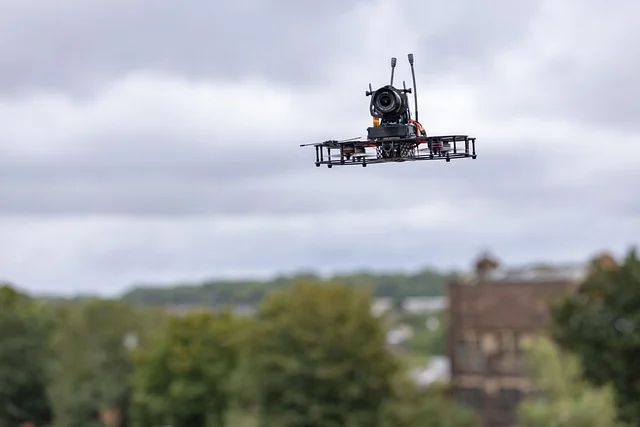
The concept of autonomous vehicles (AVs), also known as self-driving cars, has long captured the imagination of technologists, futurists, and the general public. In recent years, what was once a science fiction dream has become a tangible reality. Companies like Tesla, Waymo, Uber, and many others have invested billions of dollars in developing autonomous driving technologies, and we’re seeing an increasing number of vehicles equipped with these capabilities. However, while the progress has been significant, the road to fully autonomous transportation is still filled with challenges, potential, and uncharted territory. So, what’s next for autonomous vehicles? Let’s dive deeper into the current state of autonomous vehicles, the challenges they face, and what the future holds for this technology.
The Evolution of Autonomous Vehicles
Autonomous vehicles have evolved considerably since the early stages of development. The technology can be classified into six levels of automation, as defined by the Society of Automotive Engineers (SAE):
- Level 0: No automation. The driver is fully in control of the vehicle at all times.
- Level 1: Driver assistance. The car can assist with some driving functions like steering or accelerating, but the driver must remain engaged.
- Level 2: Partial automation. The vehicle can handle both steering and acceleration but requires the driver to monitor the environment constantly and be ready to take control.
- Level 3: Conditional automation. The vehicle can make decisions and drive in specific conditions without human intervention, but the driver must be ready to take over when necessary.
- Level 4: High automation. The vehicle is capable of full self-driving in certain environments and conditions, but not in all scenarios.
- Level 5: Full automation. The vehicle can drive itself in all conditions, and no human intervention is required.
While many cars on the road today are equipped with Level 2 autonomy, such as Tesla’s Autopilot, most experts agree that the future of autonomous vehicles lies in achieving Level 4 and, eventually, Level 5 autonomy. But this is easier said than done.
Current State of Autonomous Vehicles
Autonomous vehicle technology has advanced rapidly in recent years, thanks to improvements in artificial intelligence (AI), machine learning, sensors, and computing power. Companies like Waymo, a subsidiary of Alphabet, have been at the forefront of AV testing, with their fleet of self-driving cars already offering public rides in select cities.
Tesla, on the other hand, has integrated its Autopilot and Full Self-Driving (FSD) technologies into its vehicles, allowing for hands-free driving on highways and certain other conditions. While Tesla claims that its FSD will eventually lead to fully autonomous vehicles, the technology is still being refined and requires constant driver oversight.
Uber, after some early setbacks, including a high-profile accident in 2018, has shifted its focus to collaboration with other companies like Aurora Innovation to continue its pursuit of self-driving technology.
Moreover, many traditional automotive manufacturers such as General Motors, Toyota, and Volkswagen have invested heavily in AV technology. General Motors’ Cruise division, for example, has been testing autonomous vehicles on the streets of San Francisco and other cities, with plans for a commercial rollout in the near future.
Despite this progress, we’re still in the early days of autonomous vehicle adoption. Many obstacles stand in the way of widespread implementation, from technological limitations to regulatory challenges.
Challenges Facing Autonomous Vehicles
1. Technological Hurdles
One of the biggest challenges in advancing autonomous vehicles is perfecting the underlying technology. While Level 2 and Level 3 systems are relatively advanced, achieving full autonomy (Level 5) is a monumental task. This requires significant improvements in several key areas:
- Sensors and Cameras: AVs rely on an array of sensors, including LiDAR, radar, and cameras, to perceive their surroundings. However, these systems have limitations in adverse weather conditions such as heavy rain or snow, which can obstruct sensors and impair the vehicle’s ability to navigate safely.
- Machine Learning and AI: While AI systems are becoming more sophisticated, teaching an autonomous vehicle to account for every possible scenario on the road remains a challenge. Unexpected situations, such as pedestrians jaywalking, emergency vehicles, or erratic drivers, require the AV to make complex, real-time decisions that human drivers typically handle intuitively.
- Computational Power: Fully autonomous vehicles need enormous processing power to interpret vast amounts of data in real-time. This involves processing sensor input, understanding the environment, predicting other road users’ behavior, and making safe decisions — all within milliseconds.
2. Regulatory and Legal Challenges
Autonomous vehicles also face significant regulatory hurdles. Governments worldwide are still grappling with how to regulate and legislate self-driving cars. The development of AVs requires a complete rethink of existing transportation laws. Who is liable in the event of an accident involving a self-driving car? How should these vehicles be insured? What safety standards should they meet?
In the U.S., federal and state regulations are still evolving, with some states allowing extensive testing of AVs while others remain more cautious. Europe and Asia also have varying levels of openness to AV testing and deployment, reflecting differences in regulatory priorities.
3. Public Trust and Acceptance
Perhaps one of the most significant barriers to widespread AV adoption is public trust. A series of high-profile accidents involving autonomous vehicles has raised concerns about their safety. Many people remain skeptical about the idea of completely relinquishing control to a machine, even if the technology promises to be safer than human drivers in the long run.
Building public trust will require a combination of improved safety records, transparency from AV companies, and education about the benefits of autonomous vehicles.
4. Infrastructure and Connectivity
For autonomous vehicles to operate efficiently, the supporting infrastructure must also evolve. This includes smart traffic lights, dedicated AV lanes, and vehicle-to-infrastructure (V2I) communication systems that allow cars to interact with their environment. Implementing these changes on a large scale requires significant investment and time.
The Future of Autonomous Vehicles
Despite the challenges, the future of autonomous vehicles holds incredible promise. AVs have the potential to revolutionize transportation and bring about profound changes in how we live, work, and travel. Let’s explore some key developments we can expect in the coming years.
1. Widespread Adoption in Specific Environments
While fully autonomous vehicles that can navigate any environment may still be years away, we are likely to see widespread adoption in controlled environments such as urban centers, highways, and designated zones. Cities like San Francisco and Phoenix are already testing AVs in these settings, and it’s only a matter of time before we see fleets of self-driving taxis and delivery vehicles become commonplace in such areas.
2. Autonomous Ride-Hailing and Delivery Services
One of the most promising applications of autonomous vehicles is in ride-hailing and delivery services. Companies like Waymo, Cruise, and Uber are working to develop self-driving taxis, which could dramatically reduce transportation costs and congestion in urban areas.
Similarly, autonomous delivery services are likely to become more prevalent. Companies like Nuro are already testing small, self-driving delivery vehicles that can transport groceries, packages, and other goods. As e-commerce continues to grow, the demand for autonomous delivery solutions will increase.
3. Improved Safety and Reduced Accidents
One of the key arguments in favor of autonomous vehicles is the potential to reduce accidents. Human error is responsible for the vast majority of car accidents, and AVs have the potential to significantly decrease this figure. As the technology becomes more advanced and reliable, we can expect a reduction in road accidents, saving thousands of lives each year.
4. Environmental Impact
Autonomous vehicles could also have a positive impact on the environment. Many AV companies are focusing on electric vehicles (EVs), which produce fewer emissions than traditional gas-powered cars. Additionally, self-driving cars could lead to more efficient traffic flow and reduced congestion, further lowering emissions and fuel consumption.
5. New Business Models and Economic Impact
The widespread adoption of autonomous vehicles is likely to create new business models and reshape industries. For example, car ownership could decline as people opt for shared, autonomous transportation services. This could lead to the rise of subscription-based mobility services, where users pay for access to a fleet of AVs rather than owning a car.
Furthermore, industries such as logistics, insurance, and automotive manufacturing will undergo significant transformations as autonomous vehicles become more prevalent. Companies will need to adapt to the changing landscape and explore new opportunities in the AV ecosystem.




